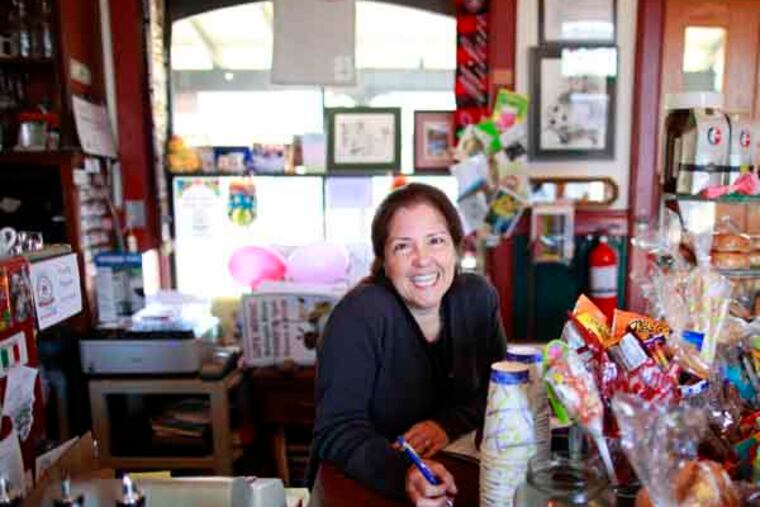Transit-oriented enjoyment in Wayne
The atmosphere is thick with the aroma of pasta sauce and lasagna from the Italian buffet, and across the room, a guitar player and an aspiring opera singer are performing.

The atmosphere is thick with the aroma of pasta sauce and lasagna from the Italian buffet, and across the room, a guitar player and an aspiring opera singer are performing.
It's evocative of the Billy Joel song "Scenes from an Italian Restaurant," but the venue in this case is SEPTA's Wayne Station in Radnor Township, for many years little more than a prosaic commuter shelter bracketing a ticket window.
Fabio & Danny's Station Cafe, on the Philadelphia-bound side of the Main Line tracks, now hosts Friday-night BYOB dinners with free music. It serves breakfast and lunch six days week. It has become the site of children's programs and adult receptions.
"We enjoy that type of open atmosphere," said Fabio Bevilacqua, who with his parents owns and operates the cafe, named for him and his late brother.
The Bevilacquas find themselves at the epicenter of a downtown Wayne renaissance, with local businesses evidently reaping a bonanza from a hot phenomenon in planning circles - transit-oriented development, or TOD.
Blocks in the vicinity of the station have undergone a boomlet in residential and retail development, especially restaurants.
It's not just Wayne. Mixed-use building is sprouting near rail tracks all over the region, from Collingswood to North Philadelphia to Ardmore to Malvern.
The concept of walkable downtowns with nightlife options has been a hit in some older communities, an alternative for people who don't want to live in the city.
"One of our main selling points was the walkability," said Cas Holloway, whose development company has built luxury condos near the Wayne station. "Most buyers wanted city living without the city."
As elsewhere, in Wayne the proximity of a train station, where a $22.7 million sprucing up was completed three years ago, has been a catalyst.
The station, used by an estimated 1,200 commuters daily, provides a reliable source of foot traffic. Pedestrian traffic, in turn, adds to a sense of safety and the viability of businesses.
And foot traffic tends to decrease automobile traffic, notes Gary McDonogh, a professor of the Growth and Structure of Cities Department at Bryn Mawr College.
McDonogh said TOD was a natural strategy in densely populated cities such as Hong Kong, where transit stations are incorporated into markets, residences, and civic centers, but it also can work in certain suburbs, including some along the Main Line.
Stations on SEPTA's Paoli/Thorndale Line, formerly the R5, date to the 19th century, and the rail line to Philadelphia was an essential aspect of the towns' prosperity. The Wayne station is listed on the National Register of Historic Places.
Recognizing the importance of the Wayne station, federal, state, and local entities kicked in for the renovations.
SEPTA built new high-level platforms that make getting on and off trains easier, wheelchair-accessible ramps, and restored the station roof, staying true to the original design, said Robert Lund, assistant general manager of engineering maintenance and construction.
The renovations were undertaken with the TOD concept in mind, said Natalia Bobak, senior project manager. Other TOD-inspired Main Line projects are in the works east and west of Wayne.
In Malvern, a $45 million apartment and retail complex, 10 years in the making, is under construction on East King Street, a couple of blocks from the train station there.
In Ardmore, developer Carl Dranoff has presented plans for a $56 million apartment and retail complex on Cricket Avenue, a two-block walk to the Ardmore SEPTA station.
McDonogh sees these developments as examples of exploiting one of the region's prime resources.
"We actually have inherited an infrastructure that many other American cities would envy as they seek to build light rails or other connectors and create social centers around them," McDonogh said.
In Wayne, on bustling Friday nights when parking is tight along North Wayne Avenue and in the lots, the train station has become something of a social center. "The community really enjoys us as we really enjoy the community," Bevilacqua said.
"The station is a cool place. People are always around."